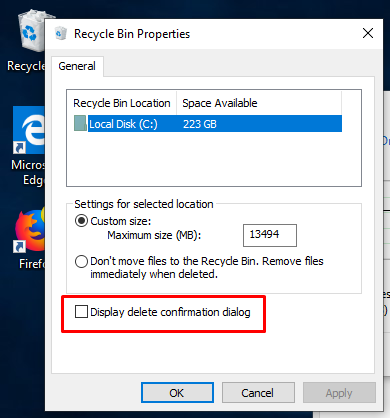
If you empty the Recycle Bin, you will always get a Are you sure you want to permanently delete.? confirmation dialog like below. Do you want to permanently delete it? confirmation message like below. If you delete a file or folder that's larger than the set maximum storage size of the Recycle Bin, then you will always get a This file is too big to recycle.

If you don't want to receive a delete confirmation dialog message each time you move a file or folder to the Recycle Bin, you can choose to not get the messages. Files deleted from removable drives are permanently deleted. Removable drives, such as USB flash drives and memory cards, will not have a Recycle Bin. If you have multiple hard drives, partitions, or an external hard drive connected to your PC, each location will have its own $Recycle.Bin and Recycle Bin settings. When you delete any of these items from your hard disk, Windows places it in the Recycle Bin and the Recycle Bin icon changes from empty to full. The Recycle Bin provides a safety net when deleting files or folders. Warning prompts are not the answer.How to Turn On or Off Recycle Bin Delete Confirmation in Windows 10 If users are being that irresponsible with their content, then this is an issue which should be addressed via (1) education (2) restriction of privilege and (3) the humility to realise that a computer will do what it’s asked in the shortest time possible. Personally, I’d suggest the moment to decide whether you want to kill a file is *before* you hit the key. Whether I’ve shift+deleted and am going for the immediate kill, or via the recycle bin thing (which is normally turned off). When I delete a file I want it gone now with no confirmation dialogues. Figure out a way to turn off this utterly pointless warning when (a) you’re deleting a file from a network drive or (2) you’re consigning it into shift+delete oblivion (rather than the easy-to-recover-from recycle bin? So far it’s not looking optimistic.

deleting a file, it is worth assuming that the user knows what they are doing and requires that the file be deleted without this utterly shabby attempt to second-guess the user’s motives.įurthermore, the behaviour is horribly inconsistent and broken as-is.


 0 kommentar(er)
0 kommentar(er)
